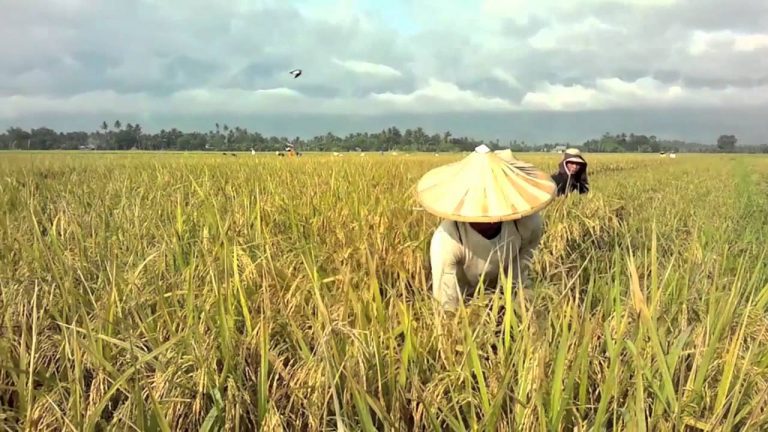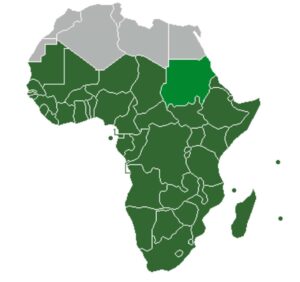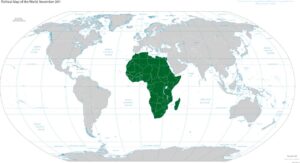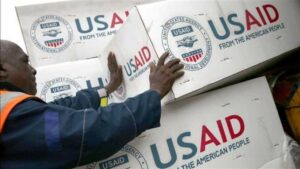11 Biggest rice producing countries in Africa (2024)

Rice holds immense significance as a staple food crop in Africa, serving as a source of sustenance for a vast number of people. The continent boasts of multiple prominent rice-producing nations, including Nigeria, Egypt, Madagascar, the United Republic of Tanzania, Guinea, Mali, Sierra Leone, Cote d’Ivoire, the Democratic Republic of Congo, Senegal, and Ghana. The purpose of this article is to investigate these countries’ rice production, the obstacles they face, and their future possibilities.
Largest rice producing countries in Africa
| Rank | Countries | Production of rice per matrix tone |
|---|---|---|
| 1 | Nigeria | 8,342,000 |
| 2 | Egypt | 4,841,327.1 |
| 3 | Madagascar | 4,391,386 |
| 4 | Tanzania | 2,688,000 |
| 5 | Guinea | 2,475,325 |
| 6 | Mali | 2,420,245 |
| 7 | Sierra Leone | 1,988,905.17 |
| 8 | Côte d’Ivoire | 1,659,000 |
| 9 | DR Congo | 1,580,620 |
| 10 | Senegal | 1,382,119.93 |
| 11 | Ghana | 1,231,200 |
1. Nigeria
Production: 8,342,000 tone
Nigeria, being the most populous country in Africa, has established itself as the primary producer of rice on the continent, achieving an annual yield of over 8,342,000 metric tonnes. This remarkable feat can be attributed to the country’s extensive arable land and favourable weather conditions for rice cultivation.
In addition, the government has implemented various policies aimed at stimulating local rice production while curtailing imports. Notably, the Central Bank of Nigeria has granted loans to farmers in the rice value chain, and the government has enforced restrictions on imported rice, protecting local farmers from unfair competition.
2. Egypt
Products: 4,841,327.1 tone
Egypt is the second-largest rice producer in Africa, with an annual production of over 4,841,327.1 metric tonnes. The country has a long history of rice cultivation, dating back to ancient times. The government has also introduced policies aimed at boosting rice production and reducing imports. For instance, the government has provided subsidies to rice farmers, and it has also invested in modern irrigation systems.
However, Egypt also faces some challenges in rice production, such as water scarcity and the need to reduce reliance on chemical fertilizers. The government needs to address these challenges to ensure sustainable rice production.
3. Madagascar
Production: 4,391,386 tone
With an annual output exceeding 4,391,386 metric tonnes, Madagascar ranks as the third-largest rice producer in Africa. The country’s rice farming sector benefits from favourable climatic conditions, as well as government policies aimed at enhancing rice production, such as subsidies to farmers and investment in irrigation systems.
Nevertheless, Madagascar’s rice production encounters some hurdles, including the necessity to improve its rice processing and storage facilities. The government must tackle these issues to maintain sustainable rice production.
4. Tanzania
Production: 2,688,000
Tanzania’s standing as the fourth-largest rice producer in Africa is no small feat. With an annual production of over 2,688,000 metric tonnes, the country’s ideal climate for rice farming and government policies to boost production have been instrumental in achieving this milestone.
The government’s provision of subsidies to farmers and investment in irrigation systems are two such policies that have helped to bolster production. However, Tanzania’s rice industry still faces obstacles, including infrastructure that needs improvement and insufficient access to credit. To ensure the continued success of its rice production, the government must address these challenges with urgency.
5. Guinea
Production: 2,475,325 tone
Guinea is the fifth-largest rice producer in Africa, with an annual production of over 2,475,325 metric tonnes. The country has a favourable climate for rice farming, and the government has also introduced policies aimed at boosting rice production. For instance, the government has provided subsidies to rice farmers and invested in irrigation systems.
However, Guinea faces some challenges in rice production, such as the need to improve infrastructure and access to credit. The government needs to address these challenges to ensure sustained rice production.
6. Mali
Production: 2,420,245 tone
Mali is the sixth-largest rice producer in Africa, with an annual production of over 2,420,245 metric tonnes. The country has a favourable climate for rice farming, and the government has also introduced policies aimed at boosting rice production. For instance, the government has provided subsidies to rice farmers and invested in irrigation systems.
However, Mali also faces some challenges in rice production, such as the need to improve infrastructure and access to credit. The government needs to address these challenges to ensure sustained rice production.
7. Sierra Leone
Production: 1,988,905.17 tone
Sierra Leone is the seventh-largest rice producer in Africa, with an annual production of over 1,988,905.17 metric tonnes. The country has a favourable climate for rice farming, and the government has also introduced policies aimed at boosting rice production.
For instance, the government has provided subsidies to rice farmers and invested in irrigation systems. However, Sierra Leone faces some challenges in rice production, such as the need to improve infrastructure and access to credit. The government needs to address these challenges to ensure sustained rice production.
8. Côte d’Ivoire
Production: 1,659,000 tone
Cote d’Ivoire is the eighth-largest rice producer in Africa, with an annual production of over 1,659,000 metric tonnes. The country has a favourable climate for rice farming, and the government has also introduced policies aimed at boosting rice production.
For instance, the government has provided subsidies to rice farmers and invested in irrigation systems. However, Cote d’Ivoire also faces some challenges in rice production, such as the need to improve infrastructure and access to credit. The government needs to address these challenges to ensure sustained rice production.
9. Democratic Republic of Congo
Production: 1,580,620 tone
The Democratic Republic of Congo is the ninth-largest rice producer in Africa, with an annual production of over 1,580,620 metric tonnes. The country has a favourable climate for rice farming, and the government has also introduced policies aimed at boosting rice production. For instance, the government has provided subsidies to rice farmers and invested in irrigation systems.
However, the Democratic Republic of Congo faces some challenges in rice production, such as the need to improve infrastructure and access to credit. The government needs to address these challenges to ensure sustained rice production.
10. Senegal
Production: 1,382,119.93 tone
With an annual production of over 1,382,119.93 metric tonnes, Senegal stands as the tenth-largest rice producer in Africa, owing to its favourable climatic conditions and the implementation of government policies aimed at enhancing rice production.
The government has instituted subsidies to encourage rice farming, and invested in irrigation systems to optimize yields. Despite these measures, Senegal faces various obstacles in its rice production, including a dire need to upgrade infrastructure and provide better access to credit. Addressing these concerns is critical to achieving and maintaining sustainable rice production.
11. Ghana
Production: 1,231,200 tone
Ghana is the eleventh-largest rice producer in Africa, with an annual production of over 1,231,200 metric tonnes. The country has a favourable climate for rice farming, and the government has also introduced policies aimed at boosting rice production. For instance, the government has provided subsidies to rice farmers and invested in irrigation systems.
However, Ghana also faces some challenges in rice production, such as the need to improve infrastructure and access to credit. The government needs to address these challenges to ensure sustained rice production.
Conclusion
Rice production is crucial for food security in Africa, and the continent has several large rice producers. However, these countries face various challenges in rice production, such as poor infrastructure, inadequate storage facilities, and access to credit. The governments of these countries need to address these challenges to ensure sustained rice production and food security.
Moreover, the global rice market is highly competitive, and African rice producers face stiff competition from other countries, such as Thailand, Vietnam, and India. African governments need to invest in research and development and modernize their production systems to compete effectively in the global market.
Don't miss a thing. Follow us on Telegram and Follow us on WhatsApp. If you love videos then also Subscribe to our YouTube Channel. We are on Twitter as MakeMoneyDotNG.




